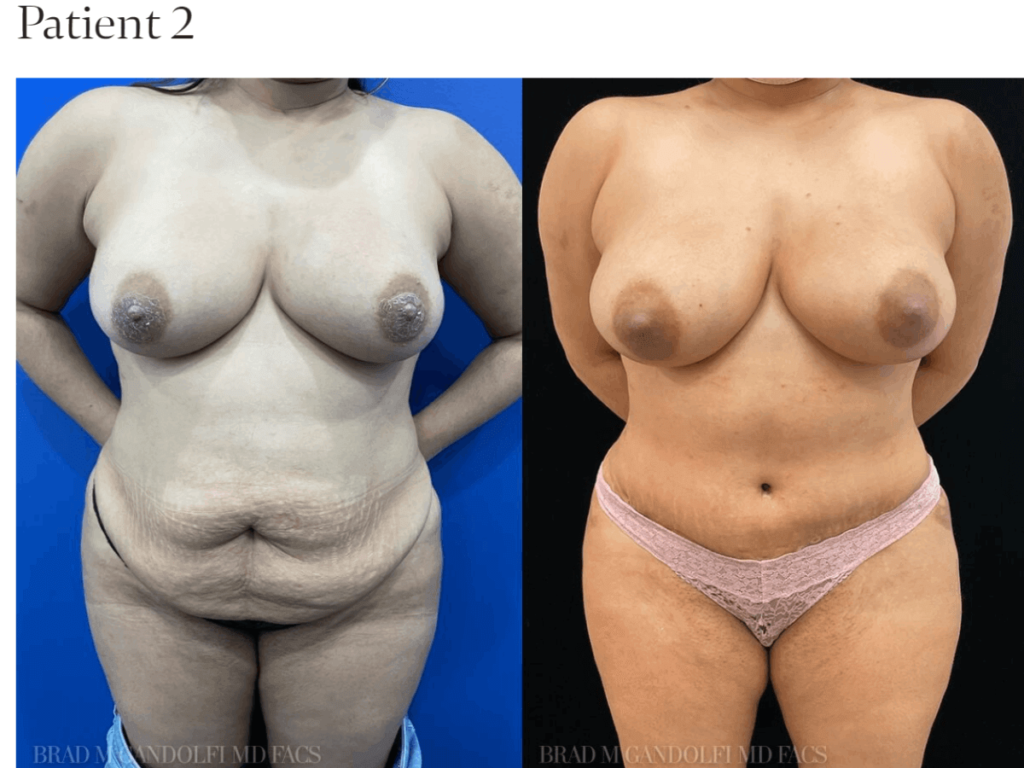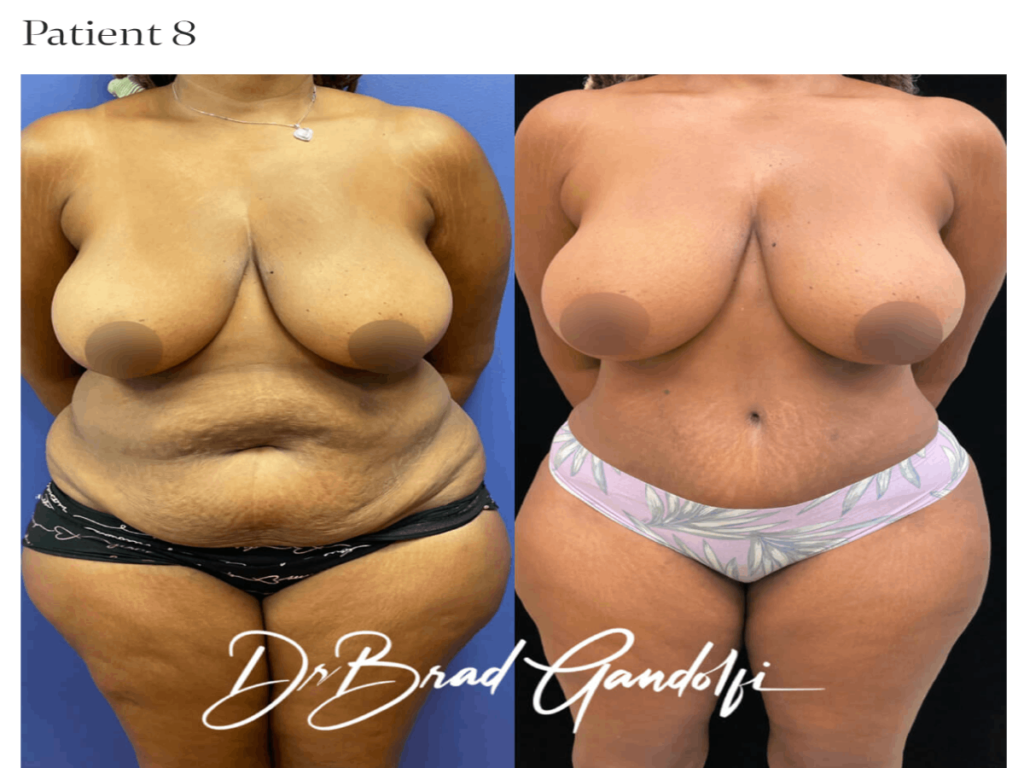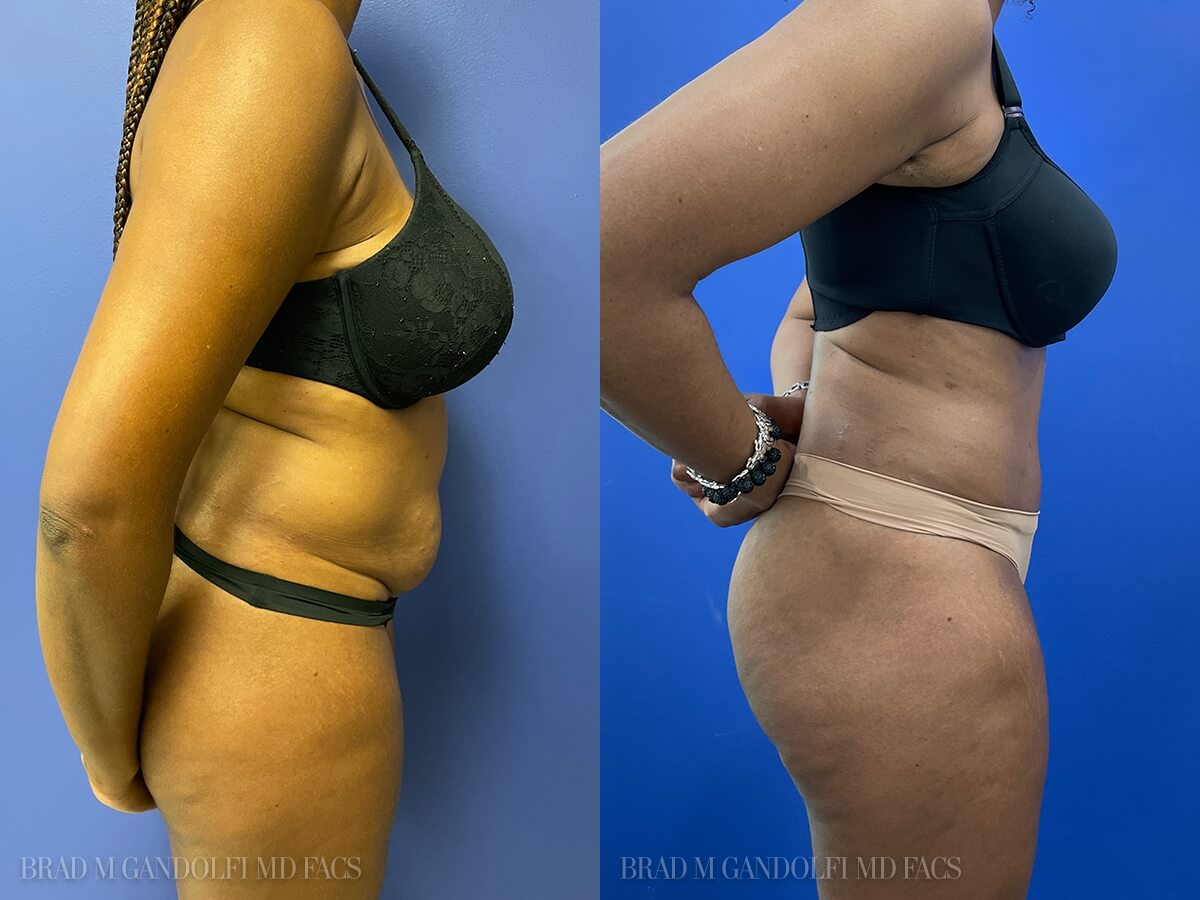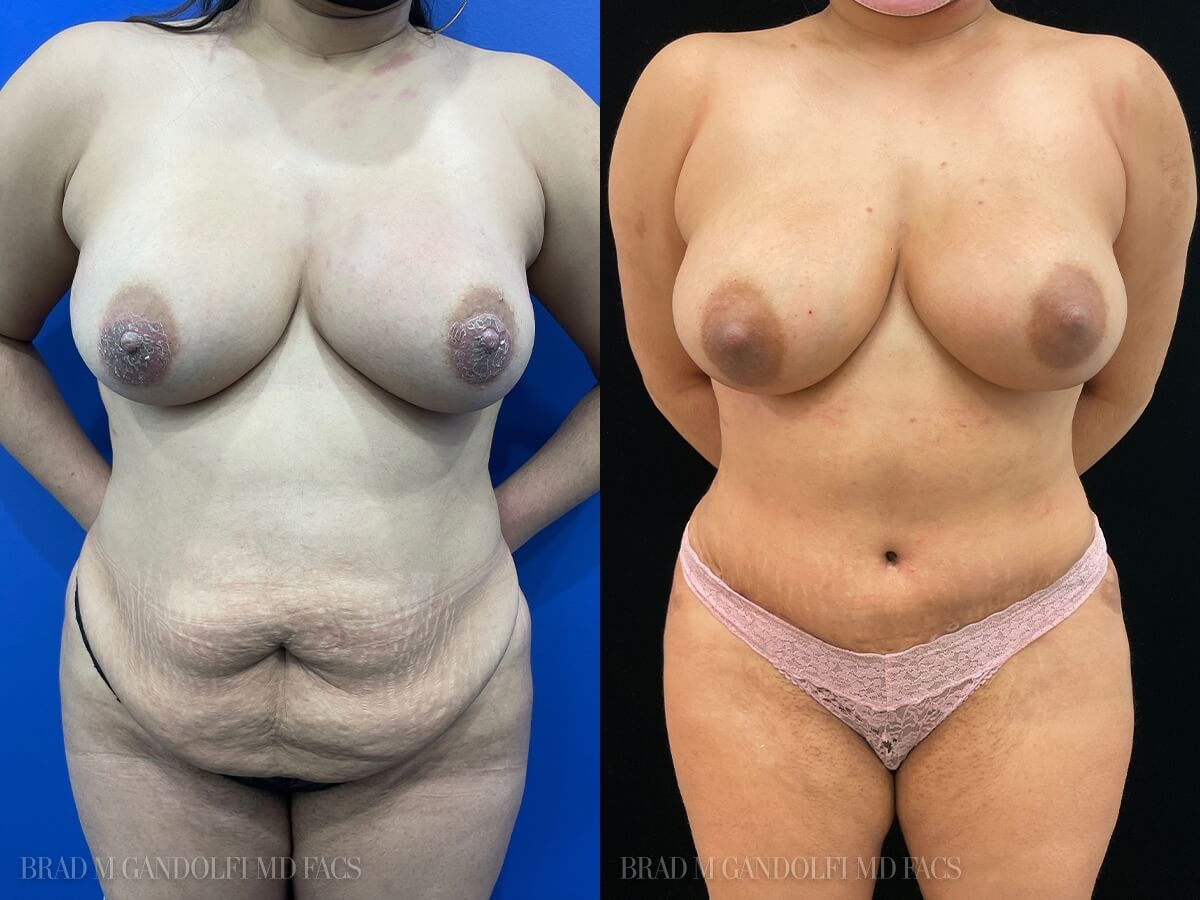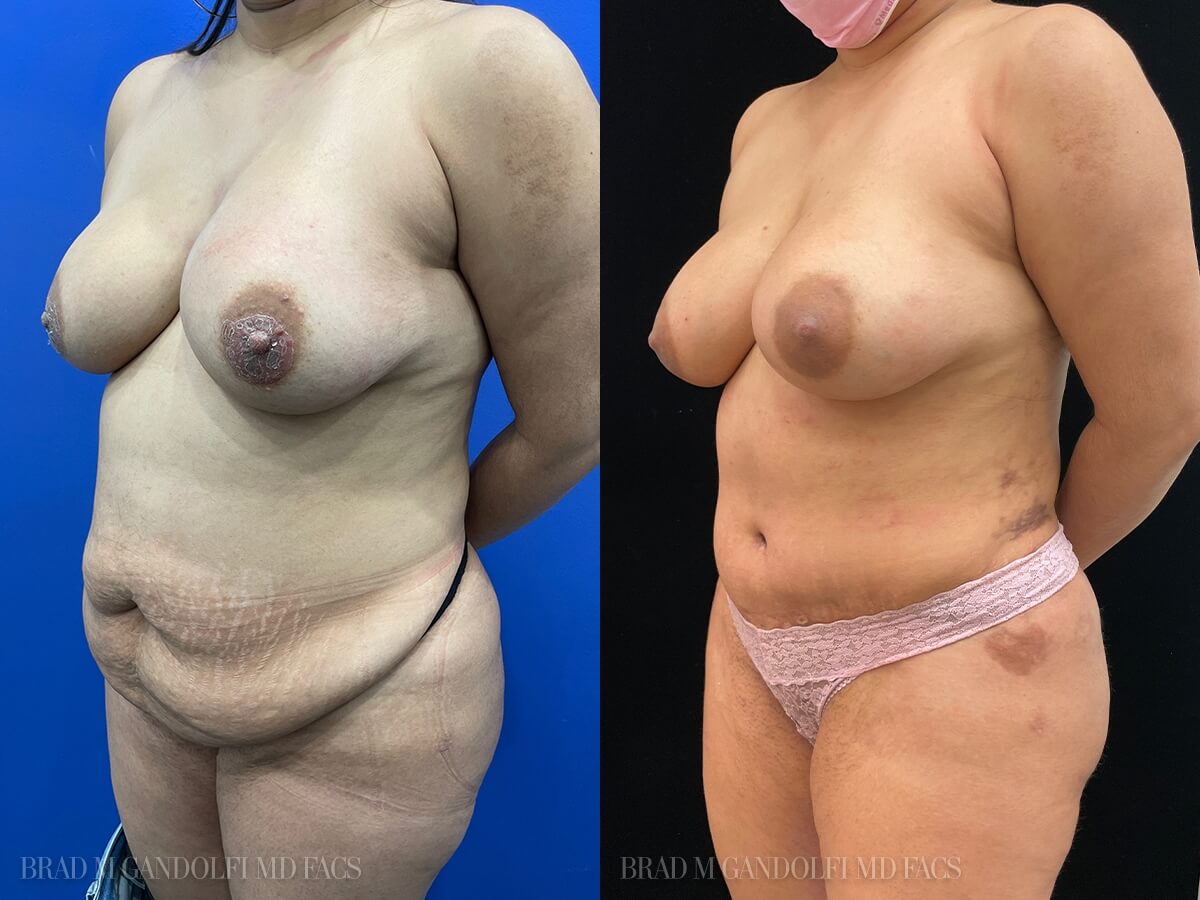
Tummy Tuck
Dr Gandolfi performs a variety of tummy tucks, depending on the needs of his client. These can include the mini tuck, a lipoabdominoplasty, an extended abdominoplasty, and the drainless tummy tuck he is best known for. Even within these categories, each style of tummy tuck is customized to meet the needs of the patient.
Dr Gandolfi has crafted his unique approach to the tummy tuck over years of practice. His training spanned the United States and post-training he has dedicated himself to acquiring and applying a unique set of techniques designed to maximize comfort and results while minimizing scarring. His knowledge of the procedure led him to write “The Expert Guide to Tummy Tucks.”
Specifically, core components of every tummy tuck performed by Dr Gandolfi include:
- General anesthetic modifications to improve recovery
- Pre-cut numbing medication designed to treat pain before it starts
- Post-surgical long-acting numbing medication to keep things comfortable
- Advanced liposuction techniques designed to maintain a natural look
- Progressive tension sutures to maintain results without garments and massages
- Lymph node sparing techniques to improve healing and allow for drainless techniques
- A custom belly button technique to hide the scar
- A focus on the contour transition from the abdomen to the pubic area
- Intra-operative medications designed to minimize hematoma/postoperative bleeding
- Blood thinners to minimize blood clots postoperatively
- Preoperative and postoperative bowel regimens
- A multi-modal pain control regimen to minimize narcotics and expedite recovery
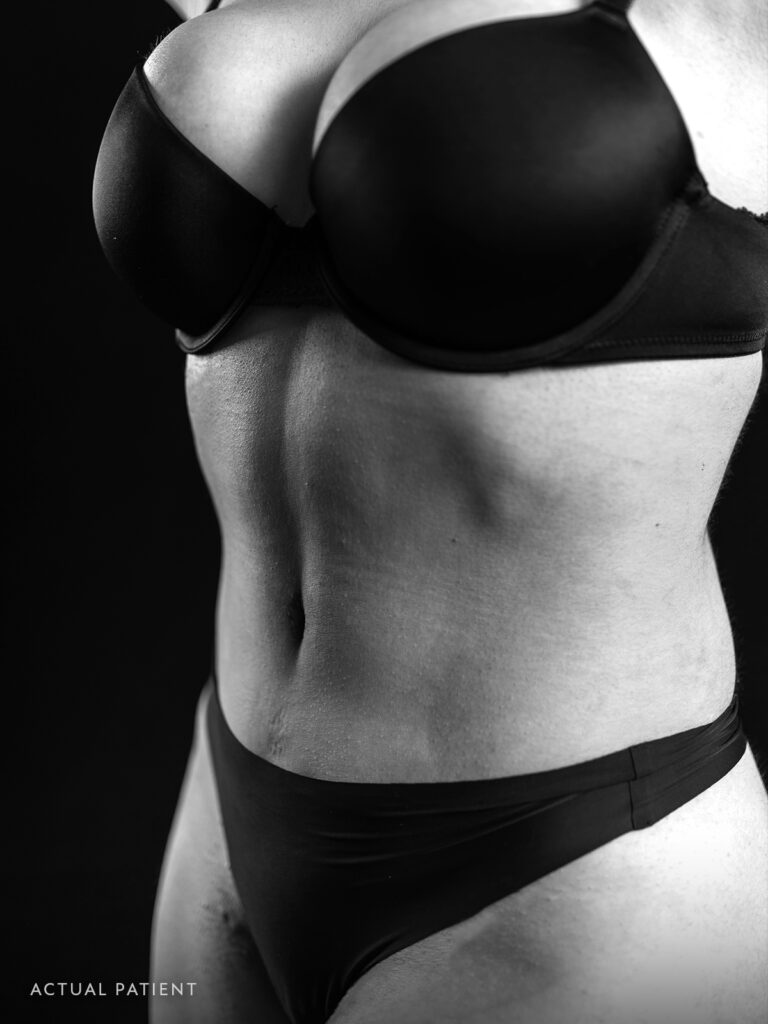
Excess skin and fat around the lower abdomen can be extremely frustrating and may not respond to diet and exercise. Through a plastic surgery procedure known as a tummy tuck, you can address these concerns and have the flat, athletic abdomen you have always wanted. Dr. Brad Gandolfi is a double board-certified plastic surgeon and two-time Castle Connolly NY top doctor who specializes in helping people achieve their goals. He does this using the newest drainless techniques that make his tummy tucks less painful and highly sought after. Although the drainless tummy tuck is the most common type performed, Dr. Gandolfi also performs mini-tummy tucks, traditional tummy tucks (with drains), and floating belly button tummy tucks.
The Benefits of a Tummy Tuck
A tummy tuck can provide you with a natural flat stomach, allowing you to look and feel your best. Some additional benefits to having a tummy tuck include:
- Diastasis recti (bulging stomach) repair: The abdominal wall is often injured during pregnancy or with weight gain, causing bulging of the stomach. The only way to repair this is with a tummy tuck. Diet and exercise will not fix this problem.
- Better posture and less back pain: By repositioning your stomach muscles, a tummy tuck can improve the position of your lower back and flatten your stomach, improving your posture and alleviating back pain.
- Hernia repairs: Both umbilical hernias and small ventral hernias can be repaired during a tummy tuck procedure.
- Fat removal, with or without transfer: Although not necessary, liposuction can be performed safely and effectively during a tummy tuck. This fat can then be transferred to areas such as the breast or hips to enhance contours.
I felt like he really listened to me. It was about giving you what you really needed to feel that confidence you needed to feel.
TUWANA
Am I a Good Candidate for a Tummy Tuck?
During your initial consultation, Dr. Gandolfi will perform a physical evaluation and review your medical history. Based on this information, he will verify whether you are a good candidate for a tummy tuck.
The best candidates for a tummy tuck:
- Are in good health overall
- Are not extremely overweight. Your BMI (body mass index) must be less than 35 to have this surgery safely. If your BMI is greater than 35, weight loss will be recommended.
- Do not smoke cigarettes or use nicotine products
You may not be a good candidate if:
- You are a smoker
- You are looking for an “easy” way to lose weight
- You think you may still wish to have children
- You have a history of blood clots
- You are on blood thinners
The Procedure Process Explained
Dr. Gandolfi is committed to personalization. No two patients are exactly alike, and neither are any two tummy tucks. The following details what most patients can expect before, during, and after the procedure.
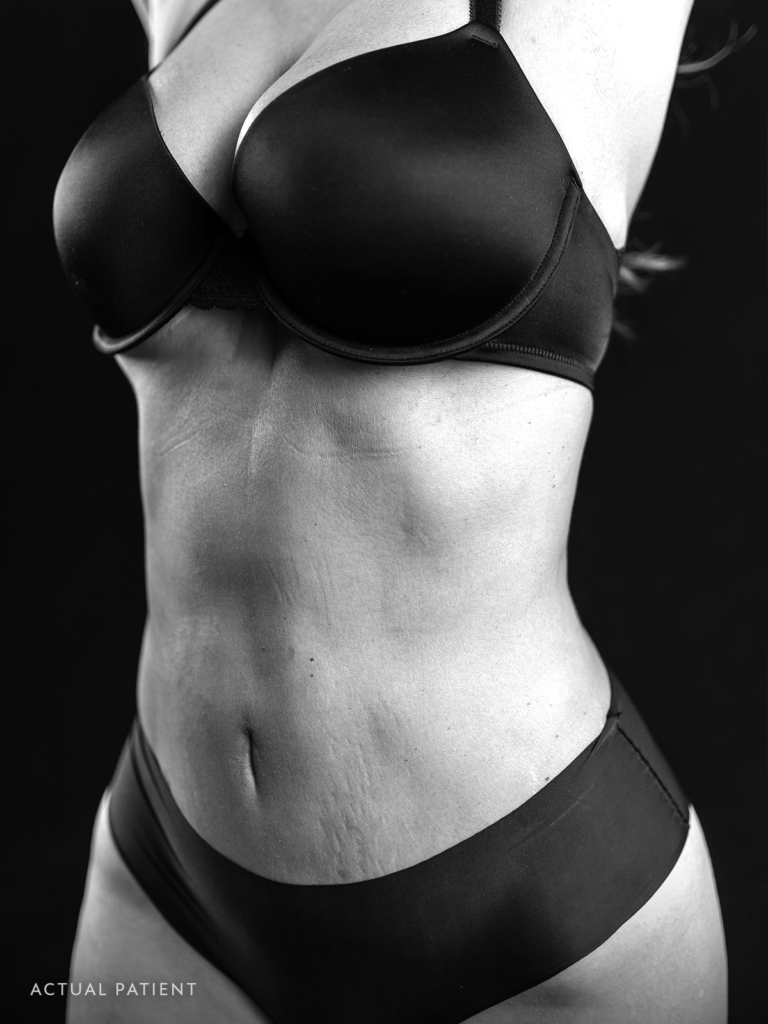
Other Things to Consider Before Getting a Tummy Tuck
Do you have additional questions about getting a tummy tuck? If so, we invite you to contact our office. We take delight in talking with our patients and educating them about different surgical options. In the meantime, here are a few of the most common inquiries.
Are There Any Risks Involved?
There are risks involved with any surgical procedure, including those associated with anesthesia. You can minimize most of these risks by ensuring that you choose a board-certified and highly experienced plastic surgeon to perform the work.
Will I Need to Request Extensive Time Off from Work?
Following a tummy tuck, it is imperative to give your body some time to heal. For most desk jobs, you can return to work after 2 weeks. If you have a physically demanding job, more time will be necessary before you are able to return to work.
Am I Too Young/Old for a Tummy Tuck?
When it comes to being a good candidate for a tummy tuck, your current lifestyle, future plans, and medical history are much more important than your age.
Does My Insurance Cover the Procedure?
Though most insurance policies will not cover a procedure like this one, we are always happy to talk with you about insurance and financing solutions.
How Long Will My Results Last?
Forever! Your new body can be thought of as a fresh starting point. You will, of course, continue to age, and you will still gain and lose weight as you do now, but the extra skin and fat that was removed will never return.
Is Getting a Tummy Tuck Really Worth it?
Ultimately, only you can make this decision. With that said, the tummy tuck is consistently rated one of the most “worth it” surgeries on Realself.com, with 96% of patients stating the surgery is a worthwhile investment.
Frequently Asked Questions
Experienced at Tummy Tucks
Ready to learn more about having a tummy tuck? Contact us to schedule a consultation at (212) 287-7211.




